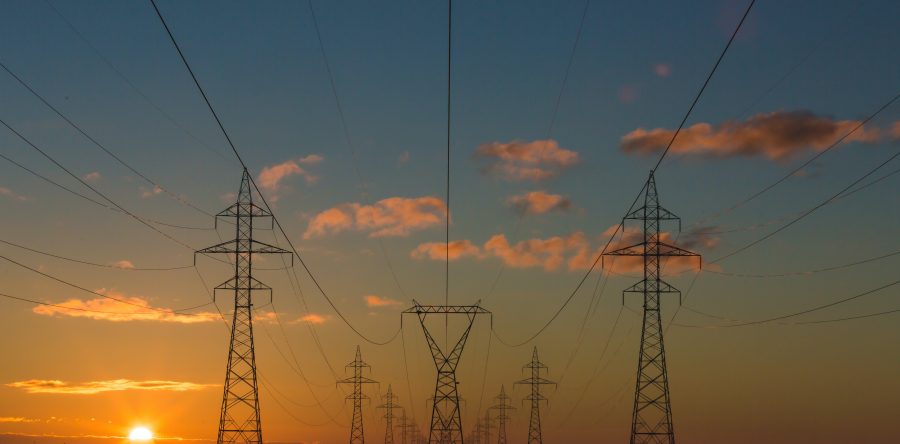The intensifying global energy crisis has generated a clean energy stress test that is uncovering serious flaws in renewables-centric strategies.
An interesting impact of this crisis of rising energy prices and faltering renewable output is the reversal in some nations’ thinking on the role of nuclear power as a zero-carbon energy backbone.
There clearly is a disconnect between clean energy ambitions and the reality of renewable power to fully or preponderantly shoulder the intensifying carbon-free electricity demand under current circumstances.
One cause of the energy crisis, in Europe, is calm weather that has limited output from wind turbines. This occurred at a time when natural gas supplies are low, driving up energy prices and forcing greater reliance on fossil fuels.
The acute crisis also struck China which is experiencing a major energy shortage that is slowing its economy. In response, it has opened the floodgates on coal mines and coal-fired power plants, impacting global efforts to reduce carbon emissions.
The result is that the Biden administration’s top climate diplomat already is downplaying expectations about major new developments at the international climate meeting in Glasgow. This despite the U.N. multinational climate panel’s dire warning that there needs to be “immediate, rapid, and large-scale reductions in greenhouse gas emissions.”
But the U.S. can use this opportunity to orchestrate nations around the importance of zero-carbon base-load power as a backbone of the clean energy transition, including sustained high-profile support for the role of existing and next-generation nuclear energy. The world already is moving in that direction.
France is highly dependent on nuclear energy. It had made a political decision to reduce its percentage of nuclear power from roughly 70% to 50% by 2035. Now, however, its president noted, “we will continue to need this technology” and the government will invest over $1 billion in “innovative small-scale nuclear reactors” by the end of the decade.
In Britain, the prime minister stated that, “We do need to go forward with more nuclear power. I think it should be part of our baseload, a big part.”
To that end, the U.K. government has centered nuclear power along with renewable energy it’s new Net Zero Strategy. It is moving toward taking a financial stake in one new nuclear plant, removing China’s General Nuclear Power Group as a major investor. There also are discussions with Westinghouse on the construction of another plant in Wales. And the British government is preparing to approve funding for a fleet of up to 16 small reactors.
Even Japan and South Korea are rethinking their post-Fukushima anti-nuclear position.
Japan’s new prime minister noted that a decade after the disaster, “it is crucial that we re-start nuclear power plants.” In South Korea the role of nuclear energy in achieving the nation’s pledge of net-zero carbon emissions by 2050 has become a major issue in the upcoming presidential election.
Perhaps most remarkable is the building pressure on Germany to reconsider its decision to phase out its nuclear plants by 2022. Over two-dozen German intellectuals advocated sustaining the use of nuclear power to support the nation’s decarbonization objectives.
Germany significantly increased its coal use in the first half of 2021 to the point where it exceeded renewable energy output despite its massive investment in wind and solar production. According to the head of the International Energy Agency, “one kilowatt of energy you produce in France is six times less carbon intensive than the equivalent in Germany.”
The U.S. is mimicking many of the same clean energy transition policies as Europe, raising the specter of a spill-over of the energy crisis to America as well as disappointing carbon reduction results.
Ironically, the Biden administration is heralding its wind power expansion strategy while simultaneously asking fossil energy companies and nations to rein in prices as the American energy consumer braces for continued spikes.
California, the nation’s leader in the transition to renewable energy, is facing numerous clean energy transition challenges. Rolling blackouts have occurred and the state is scrambling to identify power sources as it moves to shut down fossil-fuel plants and its lone remaining nuclear reactor which supplies almost 10% of the state’s electricity.
Also the U.S. electric grid is not ready to absorb the vast demands that decarbonization plans will place on it. Upgrading this essential infrastructure is necessary but it will be a long and very expensive process. There are two major pieces of legislation that can begin that overhaul but the pathway to passage of either or both bills is unclear.
The energy shock and the response to it also has geopolitical and global security dimensions.
It is now clear that the backdrop to next month’s U.N. climate change confab will be energy scarcity and rising prices. This is not a fertile foundation for coaxing additional commitments on carbon reduction. And it is sparking a rethinking about potential over-reliance on wind and solar power in major industrialized nations.
The international climate change meeting should take note of this reality and then get real about how countries can cleanly and reliably power their post-pandemic economic growth.
Ken Luongo, President, Partnership for Global Security


